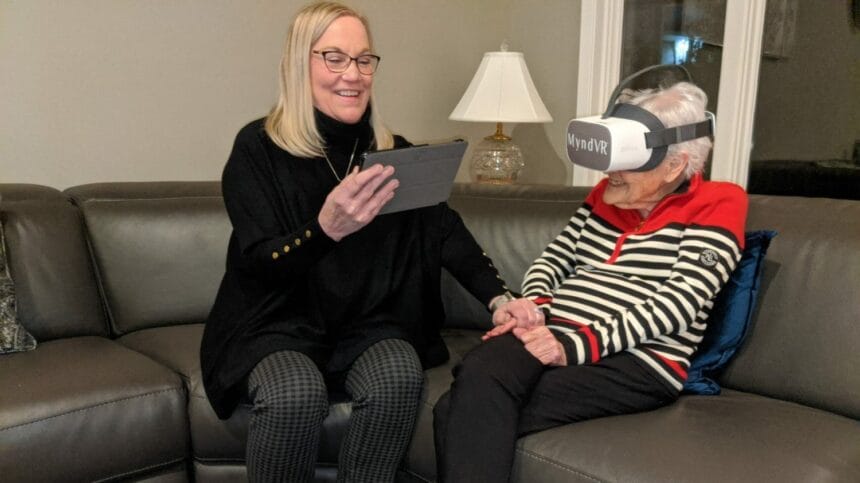
For senior living and care, virtual reality has been an effective tool in treating older adults’ physical and mental health. Augmented reality, which is even more sophisticated than VR, also can make a real difference for senior care, as researchers at a Melbourne-based university have found. The technology could be a game-changer for long-term care communities in the US.
Researchers at La Trobe University’s Digital Innovation Hub in Australia are using AR technology to make medical exams in long-term care facilities more efficient. With this technology, a nurse or nursing student, for example, wears a headset while examining a patient, and a doctor, working from another location, can see and hear the nurse-patient interactions, monitor the exam and speak with the nurse through headphones in real time. Doctors and nurses also use the headsets to access and review patient information live.
“[AR] is about putting objects in the real world that aren’t actually in the real world,” said Jeff Jones, manager of La Trobe’s Digital Innovation Hub, told ABC News in Australia. “So I can have a window with patient information on it, or I can be transmitting the video to a doctor.”
For long-term care providers, this technology can be particularly valuable, especially in areas with limited in-person visits from doctors. AR also frees up staff members; physicians can examine patients remotely without AR, but doing so usually requires two staff members: a nurse speaking with the resident while another staff member records the exam on a smartphone or iPad.The technology also is valuable in rural settings, which often have fewer healthcare providers available to visit the facilities, observers say.
Virtual care options increasingly are accessible, affordable and easy to use, according to research published in the April issue of JAMDA, the Journal of Post-Acute and Long-Term Care Medicine. The study, which surveyed adults aged 68 to 87 who live in residential care communities, found that virtual environments give users personalized, immersive 360-degree experiences that stimulate emotional responses. VR is also effective in treating anxiety, apathy, loneliness, depression and improving overall quality of life, the research found.



